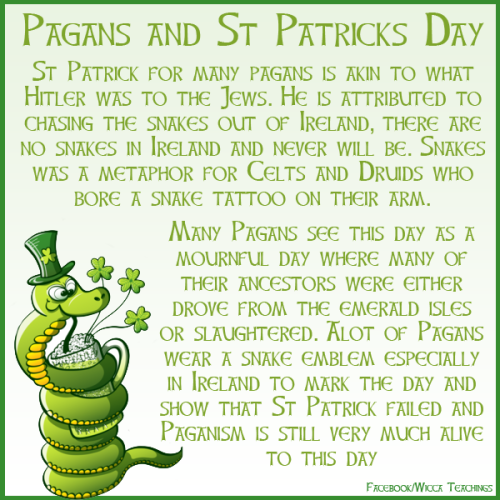Gallery
Photos from events, contest for the best costume, videos from master classes.
 |  |
 |  |
 | |
 |  |
 |  |
 |  |
The Annals of the Kingdom of Ireland by the Four Masters mentions a number of stories relative to Irish Druids, then believed to have once ruled Erin. St. Patrick was a youthful slave to Milcho, a Druidical priest. St. Patrick's Day Today . Today, St. Patrick's Day is celebrated in many places on March 17, typically with a parade (an oddly American invention) and lots of other festivities. In Irish cities like Dublin, Belfast, and Derry, the annual celebrations are a big deal. In the Christian monasteries of Ireland, the great written works of the past were copied and preserved for future generations. Through his vision and mission, St. Patrick changed not only Ireland, but the world.” Top image: St Patrick Source: Thad Zajdowicz / flickr. By Joanna Gillan The old men and women of this neighbourhood used to believe that Lough Derg was the last stronghold of the Druids in Ireland; and from what I have heard them say, I think the old legend means that this is where St Patrick ended his fight with the druids and that the serpents represent druids or paganism. Another big aspect of Saint Patrick's day for pagans is the idea that the story of Patrick driving the snakes out of Ireland was actually an allegory for his driving out of the Druids. This idea is pretty well integrated into media and common belief; many people repeat it and there are even modern celebrations of "All Snakes Day" in honor of The shamrock legend came along centuries after Patrick’s death, as did the miraculous battles against the druids. And forget about the story about him driving out the snakes – Ireland never had any to begin with. The real story of St Patrick is much more interesting than the myths. There is no archaeological or historical evidence that Patrick drove snakes out of Ireland. The island had likely been snake-free since the Ice Age. Patrick - A Slave to Ireland, RTÉ One, St Every year on March 17, people around the world celebrate St. Patrick’s Day, honoring the patron saint of Ireland. But what started as a religious feast has evolved into a vibrant, global celebration of Irish culture. St. Patrick was Italian; St. Patrick drove the snakes from Ireland; St. Patrick was the first to bring Christianity to Ireland – all of these statements are false! Let’s take them one at a time. Some claim St. Patrick to be Italian because he was born in Roman occupied territory, and his name was Patricius. On March 17, people will celebrate St. Patrick’s Day by parading in green hats, sporting images of shamrocks and leprechauns, and Patrick’s picture will adorn greeting cards - but Patrick’s Christianity was actually introduced to Ireland even before St Patrick through Roman Britain, and evidently spread amongst the most politically powerless segments of Irish society; women and slaves. Indeed, Patrick wasn't even Ireland's first evangelist; a man named Palladius was sent to "the Irish believing in Christ" in 431 AD. Today is St. Patrick’s Day, a yearly holiday celebrating Ireland’s favorite patron saint.While it’s a big event in Ireland (and used to be a very solemn occasion), in America it’s a green Did saint Patrick destroy the Druids in Ireland? This is probably the thing that I hear the most often about saint Patrick, leaning into the Christian propaganda of the 7 th and 12 th centuries which positioned Patrick as the champion of Christianity in Ireland. St. Patrick’s Day, celebrated on March 17 each year, is known for its parades, shamrocks, and a whole lot of green. It’s a day when people around the world embrace Irish culture — whether they have Irish heritage or not. But behind all the revelry, St. Patrick’s Day has a deep and fascinating history that goes far beyond the modern celebrations. Some of the traditions we associate with Saint Patrick’s Day Parade. Source: Wikimedia Commons It is unclear exactly when or how Saint Patrick died, but it is traditionally thought to have been on March 17, 461 CE, after having preached in Ireland for 40 years. March 17 is known as Saint Patrick’s Day and is his Feast Day in the Catholic calendar. Some say the villa was attacked during the day while Patrick played on the beach. Although Patrick’s family escaped, Patrick and many of the family’s workers did not; and soon they were en route to Ireland, where Patrick was sold as a slave to Miliuc of Slemich, a Druid tribal chieftain. Patrick was given the task of a herdsman. 2. Did St. Patrick really drive the snakes out of Ireland? The story of St. Patrick driving the snakes out of Ireland is symbolic, not literal. Ireland has never had native snakes. The “snakes” are widely interpreted as a metaphor for paganism and the suppression of indigenous beliefs. 3. Most scholars agree: the “snakes” Patrick drove out were not animals—but ancient beliefs. In pre-Christian Ireland, the serpent was a symbol of spiritual power—used by druids, pagans, and mystics of the old ways. The myth of Patrick banishing snakes likely represents his mission to displace paganism and convert Ireland to Christianity. Everyone knows about St Patrick – the man who drove the snakes out of Ireland, defeated fierce druids in contests of magic and used the shamrock to explain the Christian Trinity to the pagan Irish. It’s a great story – but none of it is true. When the Druids refused to be bribed by the Romans, this angered the rulers of the Catholic Church.St. Patrick declared that he would drive all of the snakes out of Ireland. ³Snakes´was a metaphor for the Druids. Since the Druids did not write their teachings down, all we know about them is was handed down to us by the Romans.
Articles and news, personal stories, interviews with experts.
Photos from events, contest for the best costume, videos from master classes.
 |  |
 |  |
 | |
 |  |
 |  |
 |  |